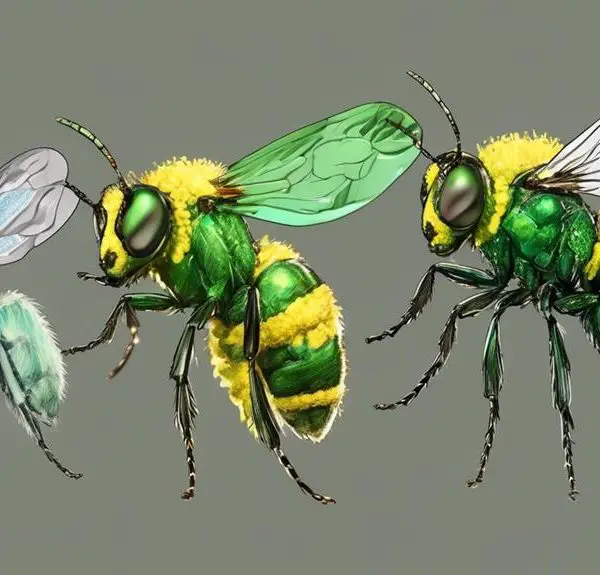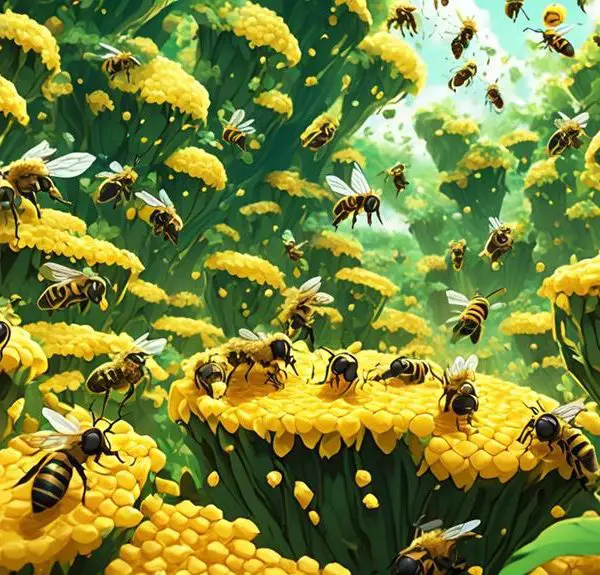Navigate the intriguing world of sweat bees and uncover their unsung role in our ecosystem, proving their significance beyond their attraction to human sweat.
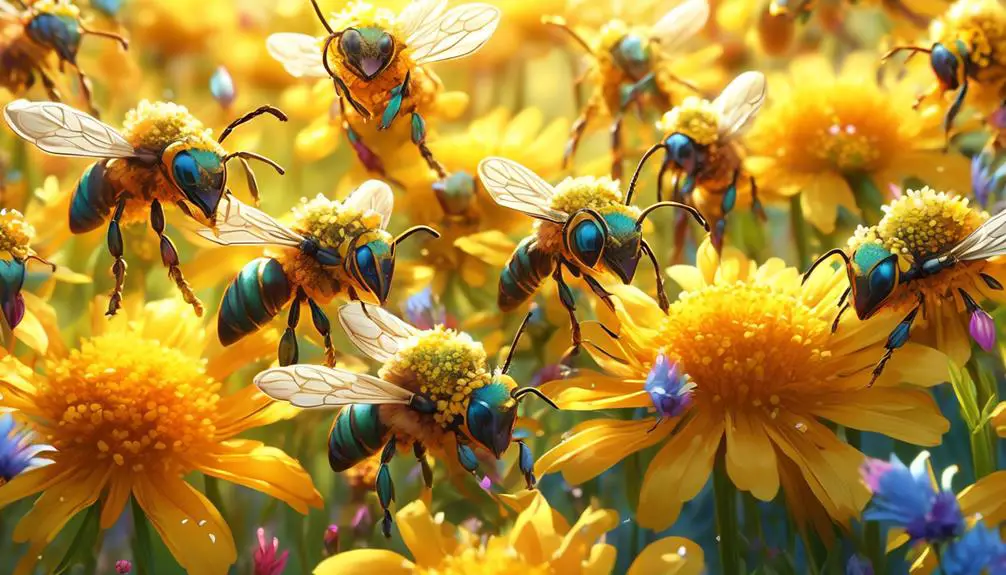
Do Sweat Bees Serve a Purpose
You've likely heard the theory that every creature, no matter how small or seemingly insignificant, plays a role in the grand scheme of our ecosystem. Let's apply this thinking to a tiny insect which often goes unnoticed – the sweat bee.
You might wonder if this minuscule insect, known more for its attraction to human sweat than anything else, really serves a purpose. Could it be that these little creatures contribute more to our world than we give them credit for?
Stay with us, as we uncover the truth behind the purpose and significance of sweat bees.
Key Takeaways
- Sweat bees are vital pollinators, contributing to the reproduction of many plants.
- Sweat bees play a crucial role in the growth of fruits, vegetables, and flowers.
- Sweat bees serve as food for insectivorous animals, contributing to the food chain.
- Sweat bees aid in soil aeration and nutrient recycling through their burrowing behavior.
Understanding Sweat Bees
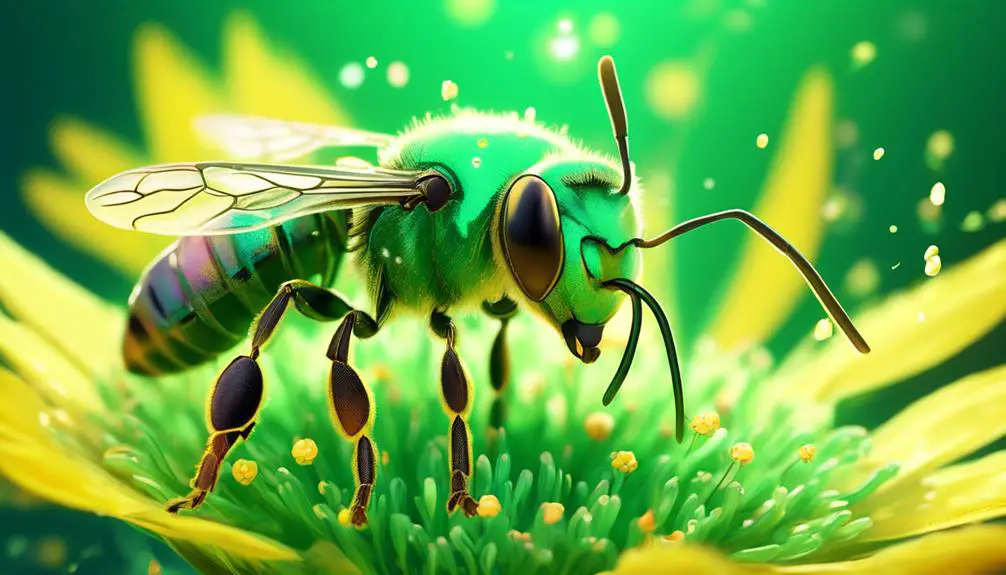
In order to fully understand sweat bees, you'll need to delve into their unique biology, behavior, and crucial role in our ecosystem.
Sweat bees, scientifically known as Halictidae, are a large family of bees that are named for their peculiar attraction to human sweat, which they consume for its salt content. They're small in size, often less than half an inch, and are found in a wide variety of colors.
What's fascinating about these creatures is their diverse behavior. Unlike other bees, sweat bees exhibit both solitary and social behaviors. While some species live alone, others form intricate, cooperative colonies, showcasing a remarkable level of adaptability.
But, why should you care about these tiny, sweat-loving insects? The answer is simple: sweat bees are vital pollinators. They help in the reproduction of many wild plants, and even some crops. Their small size allows them to pollinate flowers that larger bees can't reach, thereby promoting biodiversity. Without them, our ecosystem would be markedly different, and not for the better.
The Sweat Bee's Lifecycle
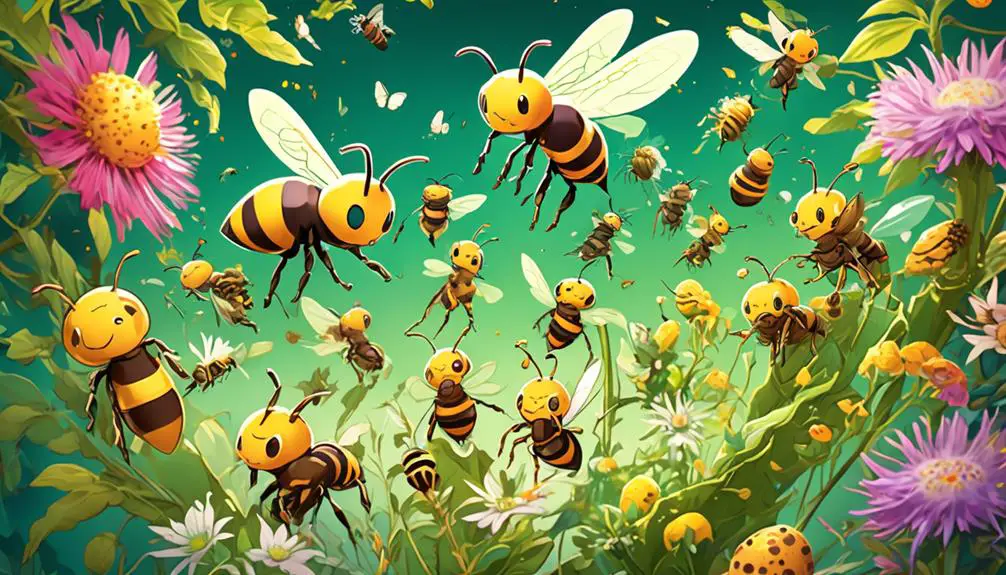
You've learned about the critical role sweat bees play in our ecosystem, now let's examine their intriguing lifecycle to further appreciate these tiny powerhouses.
Sweat bees pass through four primary stages: egg, larva, pupa, and adult, a process known as complete metamorphosis.
In the spring, female sweat bees emerge from their winter hibernation and begin the process of building nests, usually in the ground. Once the nest is prepared, the female lays an egg on a provision of pollen and nectar she's collected and sealed within each cell of the nest.
The egg hatches into a larva, which feeds on the stored provision until it's fully grown. Then, it spins a cocoon around itself and enters the pupal stage. During this period, the bee undergoes a transformation, developing wings, legs, and antennae.
After a few weeks, the adult sweat bee emerges, ready to start the cycle again. The female bees hibernate during the winter while the males die off.
The lifecycle of a sweat bee is a fascinating process, a testament to the adaptability and resilience of these important pollinators.
Sweat Bees and Pollination

Now that we've delved into the lifecycle of sweat bees, let's explore their crucial role in pollination. You may not realize it, but these tiny creatures have a big job. They're responsible for pollinating numerous plant species, aiding in the growth of fruits, vegetables, and flowers.
Uniquely, sweat bees are generalists, meaning they can pollinate a wide array of plants. This versatility makes them incredibly important for the ecosystem.
Consider this:
Sweat Bee Behavior | Impact on Pollination |
|---|---|
Generalist approach | Can pollinate a wide array of plants |
Attraction to sweat | Increases likelihood of cross-pollination |
Small size | Can reach smaller flowers larger bees can't |
Their attraction to sweat also increases the likelihood of cross-pollination. As they move from person to plant, they can transfer pollen. Additionally, their small size allows them to reach smaller flowers larger bees can't.
Sweat Bees in the Ecosystem
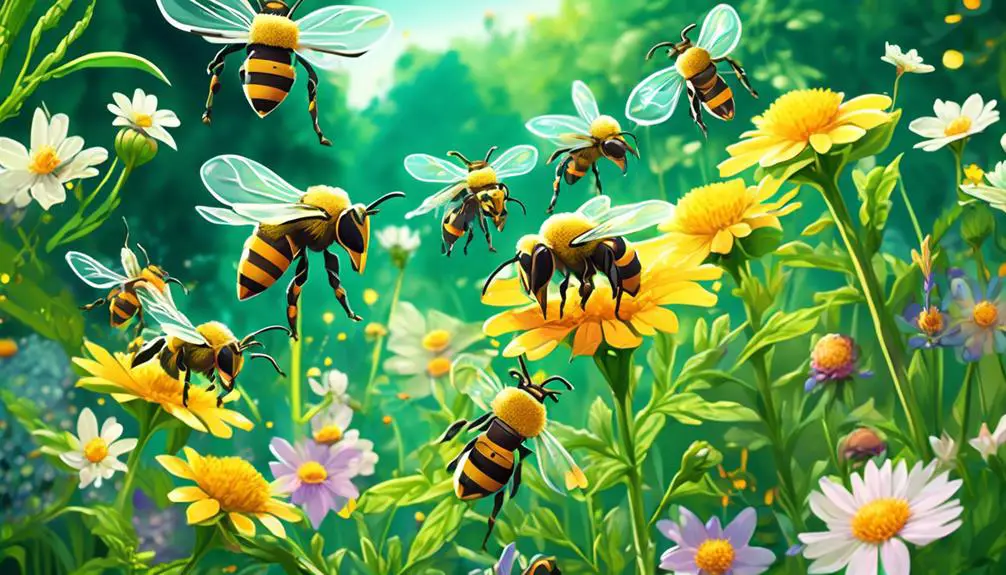
Having understood their crucial role in pollination, let's shift our focus to the broader impact of sweat bees within the ecosystem. These tiny insects, often overlooked, play a significant part in maintaining biodiversity. They serve as food for various insectivorous animals, contributing to the food chain.
Your garden's vibrant health, for instance, isn't just due to your hard work. Sweat bees help control pests by preying on aphids and other destructive insects. They're also important players in soil aeration and nutrient recycling, as their burrowing behavior aids in soil turnover.
More importantly, sweat bees are indicators of ecosystem health. Their presence or absence can provide critical insights into the overall status of the environment. A decline in their population might signal habitat degradation or pollution, alerting us to potential ecological issues.
In areas where honeybee populations have suffered due to disease or pesticides, sweat bees have stepped in to fill the pollination void, ensuring continuity in plant reproduction.
Coexisting With Sweat Bees
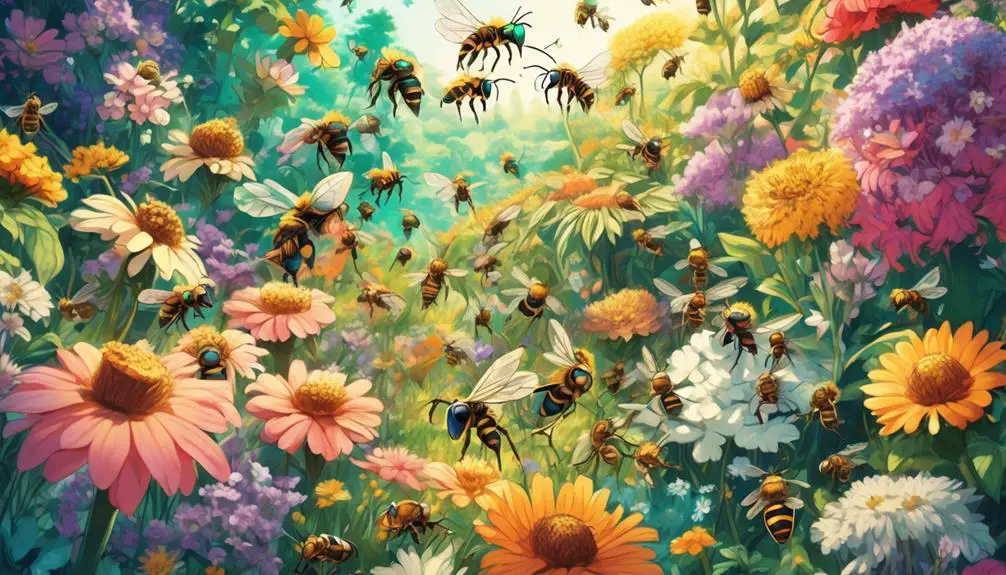
Despite their sometimes intrusive reputation, learning to coexist with sweat bees can significantly benefit both our gardens and the broader ecosystem. These little pollinators, often mistaken for pests, are in fact crucial players in maintaining plant diversity and producing food crops. Your role in this delicate balance is simple yet impactful.
Let's take a look at two key areas: your garden and your behavior.
Your Garden | Your Behavior |
|---|---|
Plant native flowers to attract sweat bees. They're less likely to sting when they can easily access nectar. | Don't swat at sweat bees. They're not aggressive and only sting when threatened. |
Avoid pesticides. These chemicals can harm sweat bees and disrupt the pollination process. | Wear light-colored clothing. Sweat bees are attracted to dark colors and strong scents. |
Provide a water source for sweat bees. They need water to survive, especially in hot weather. | Learn to live with sweat bees. Recognize their role in the ecosystem and respect their space. |
Your actions can make a significant difference in sweat bees' survival. Coexisting with them isn't just good for the environment, it's also good for us. After all, our lives are deeply intertwined with the health of our planet's ecosystems.
Conclusion
So, do sweat bees serve a purpose? Absolutely! These tiny flyers play a crucial role in pollinating our ecosystem. They're essential workers in the world's agriculture, ensuring we've a diverse food supply.
Even though they might seem a nuisance with their attraction to sweat, remember, they're just doing their job. So next time you encounter a sweat bee, give it a nod of respect for the vital role it plays in our world.

